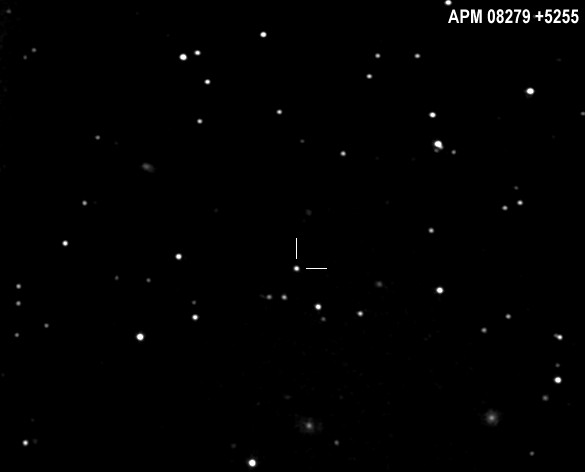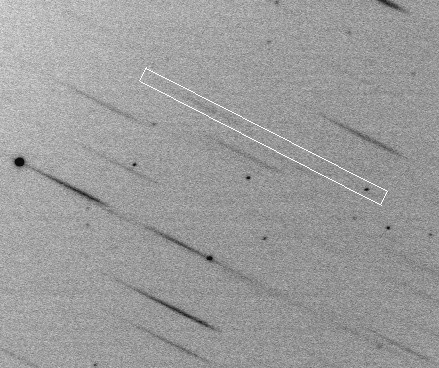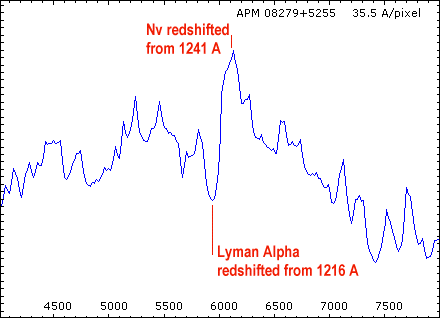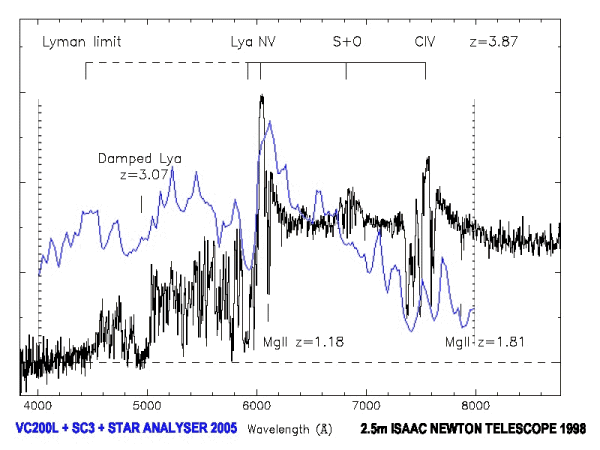|
Redshift of QSO APM 08279 +5255 |
|
|
|
Blazing with the power of more than ten million, million suns, this Quasar is one of the most luminous objects in the Universe. With a redshift of 3.87, we see this remote object as it was just 1.6 billion years after the Big Bang. Despite its remoteness, help from gravitational lensing produced by an intevening galaxy gives it an apparent magnitude of +15.2 (Rmag) Discovery paper: THE ASTROPHYSICAL JOURNAL 505:529-535, 1998 October 1 This is a straightforward target for CCD imaging and brings it just in range of the Star Analyser spectrograph used with a 200mm aperture telescope. This image was taken with the VC200L at f6.4 and SC3 modified webcam. (47x 30sec stack) |
|
|
Spectrum image taken with the 100 l/mm Star Analyser diffraction grating mounted approximately 20mm in front of the camera CCD chip (closer than normal to decrease the resolution and concentrate the spectrum of this faint object) The target was close to the zenith, reducing atmospheric extinction and background skyglow. A stack of 77x 60sec exposures was used to produce this image. Despite this, the spectrum is barely above the noise. |
|
|
The wavelength axis was calibrated using H alpha absorption lines visible in the spectrum of nearby Iota UMa (spectral type A7) The characteristic sudden attenuation of shorter wavelengths seen in remote objects is clear. This is caused by the "Lyman Forest" of absorption lines from intervening hydrogen gas at a range of redshifts. Lyman Alpha, normally in the UV at 1216 A is redshifted to 5922A. Nv emission from the QSO , redshifted from 1241A is also apparent. |
|
|
This result has been overlaid on the spectrum published in the discovery paper (taken with the 2.5m Isaac Newton telescope) The difference in the broad shape is because the Star Analyser spectrum has not been corrected for the instrument response.
Other amateur spectra of this object: |



